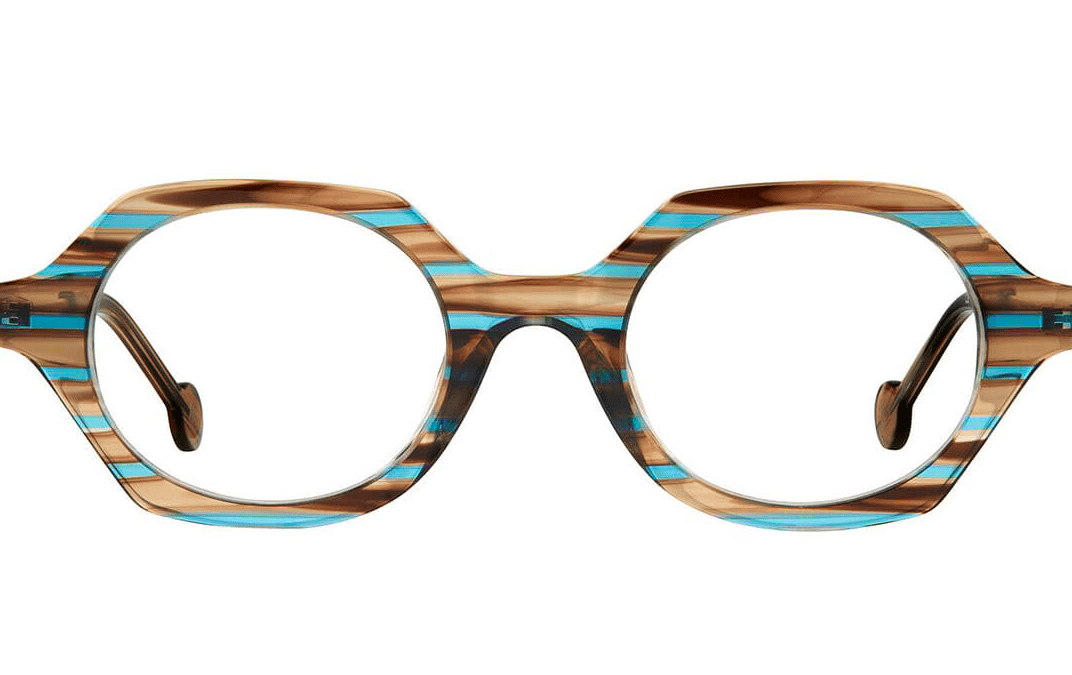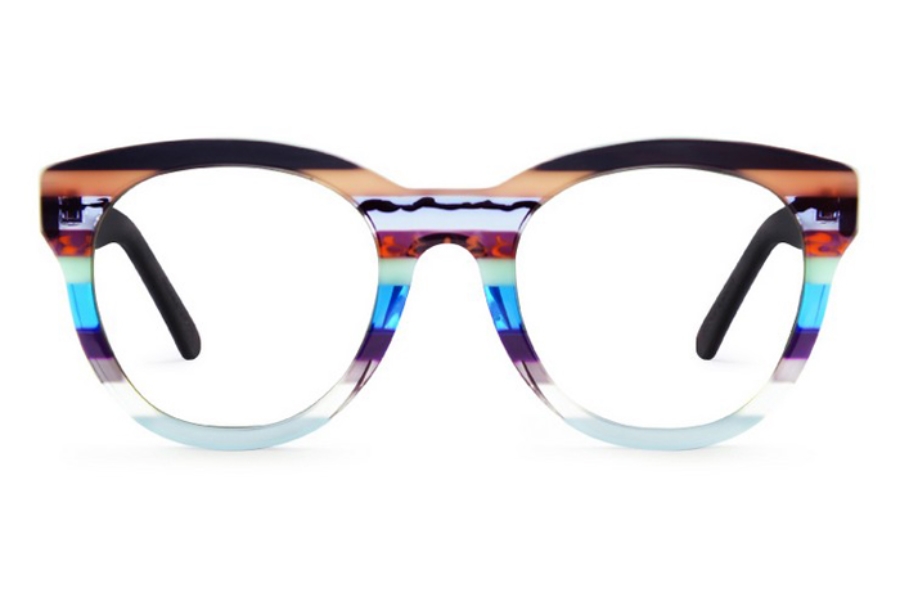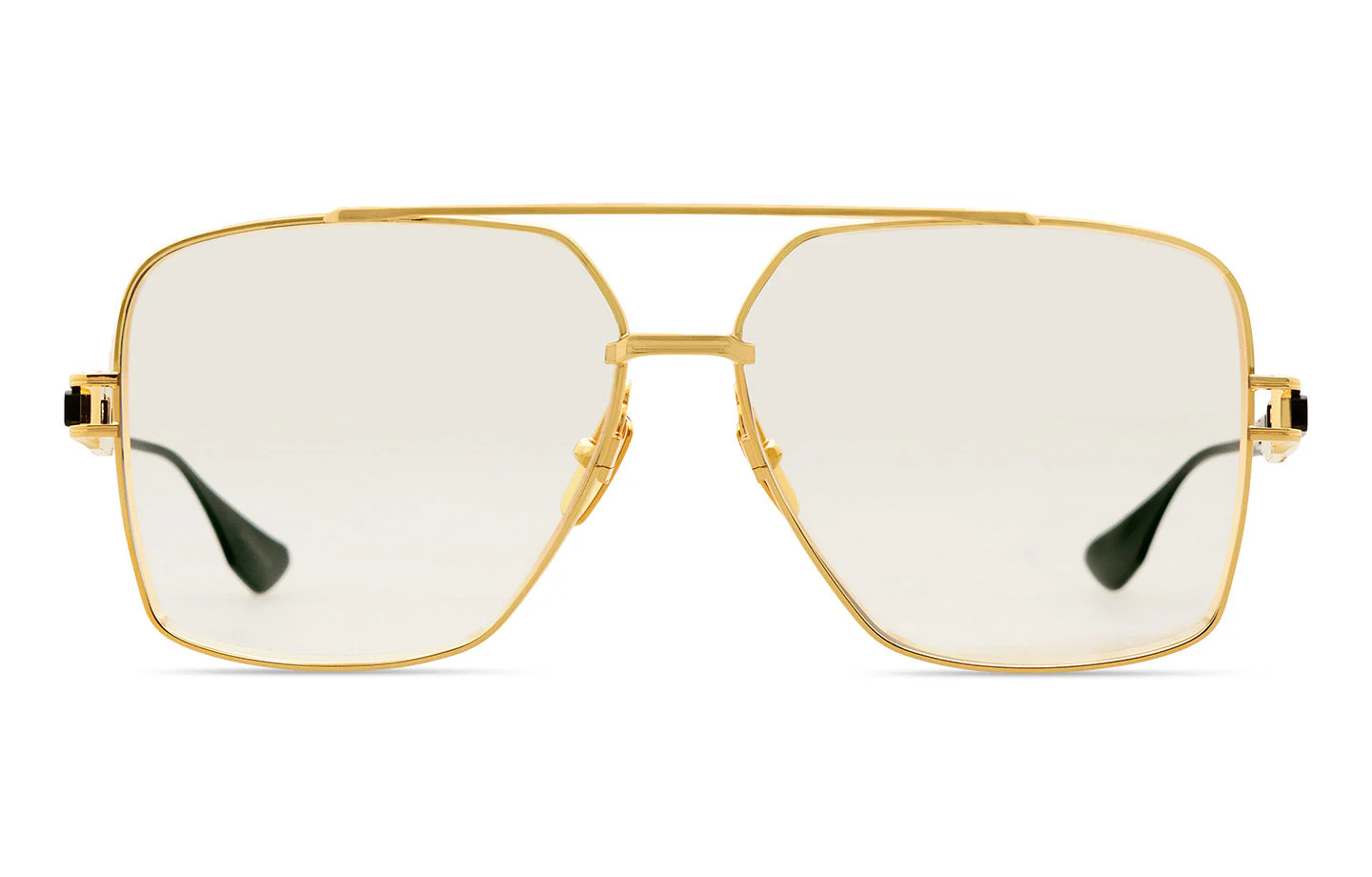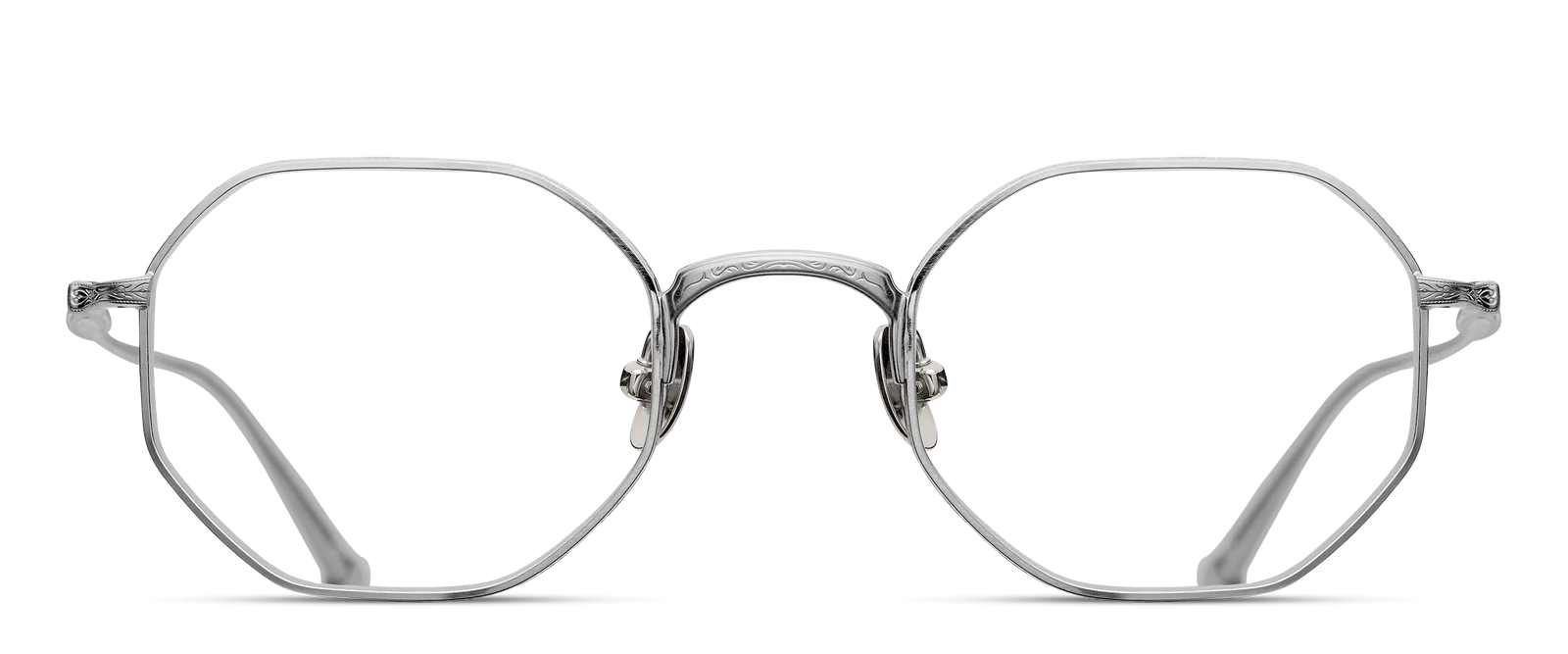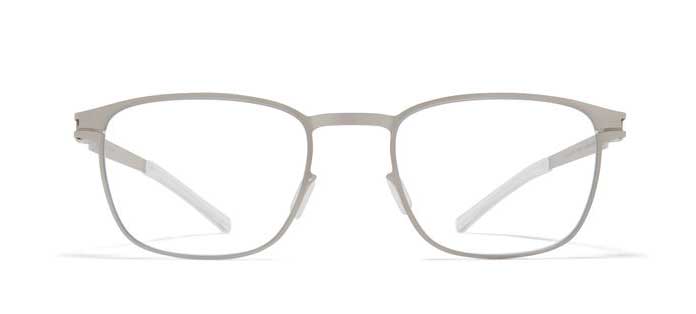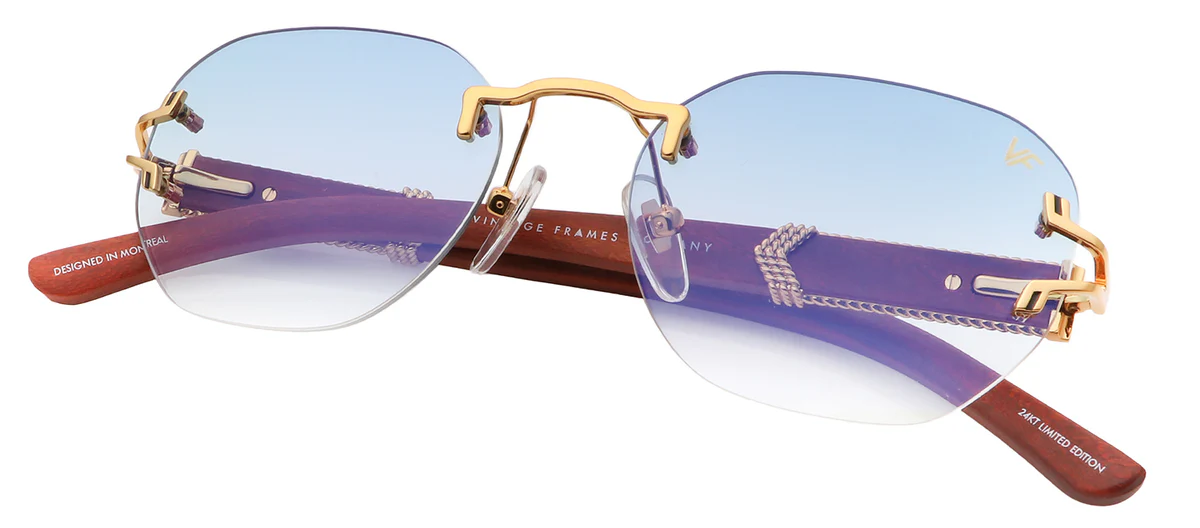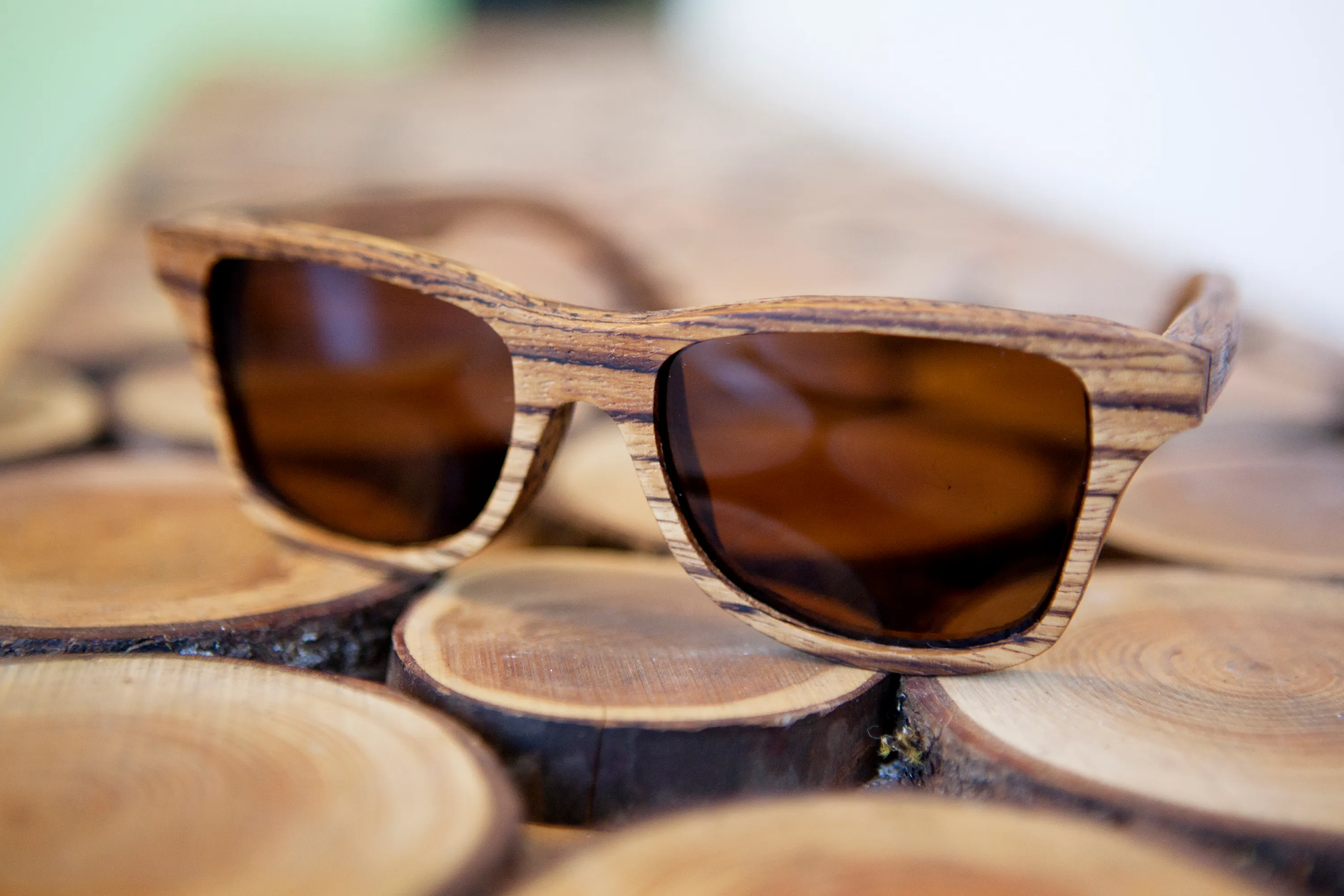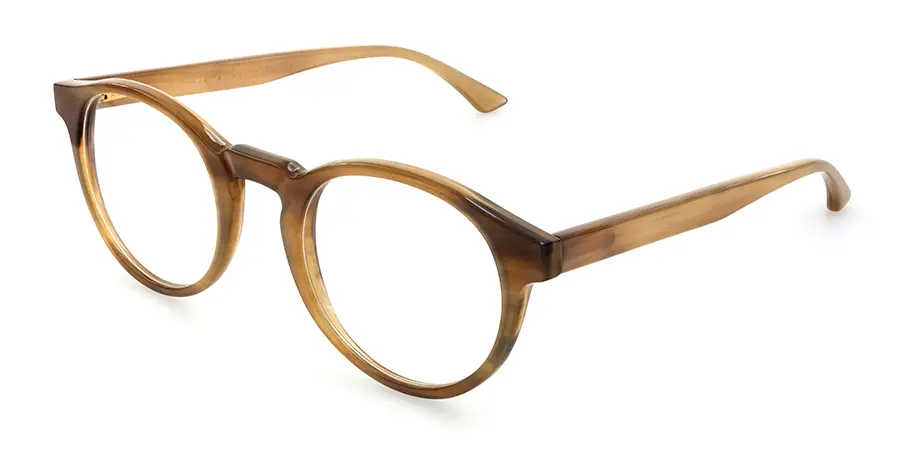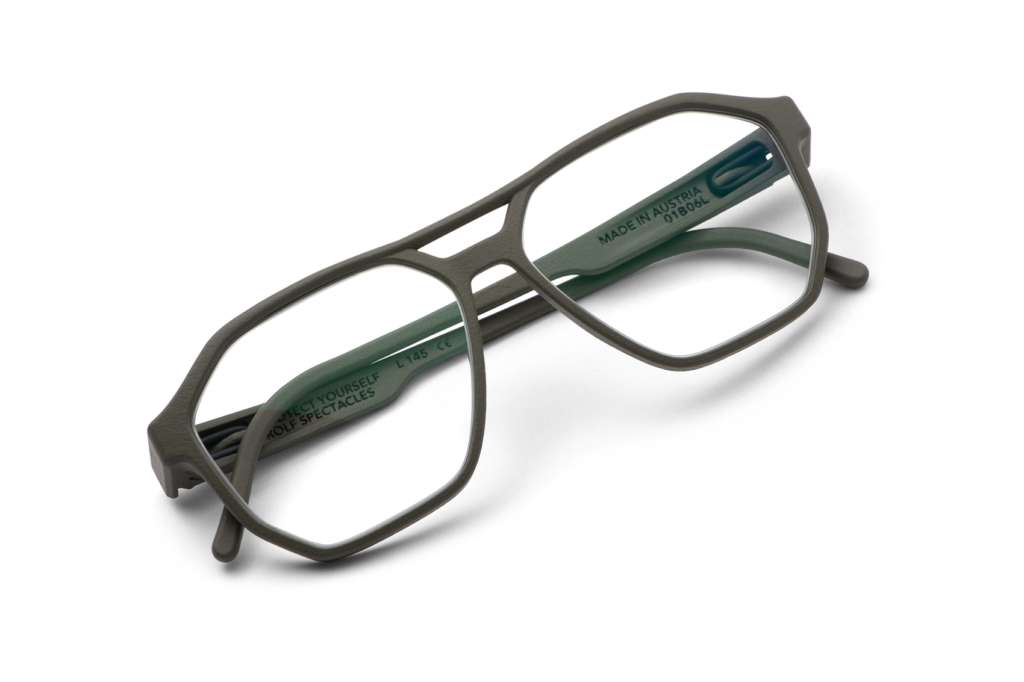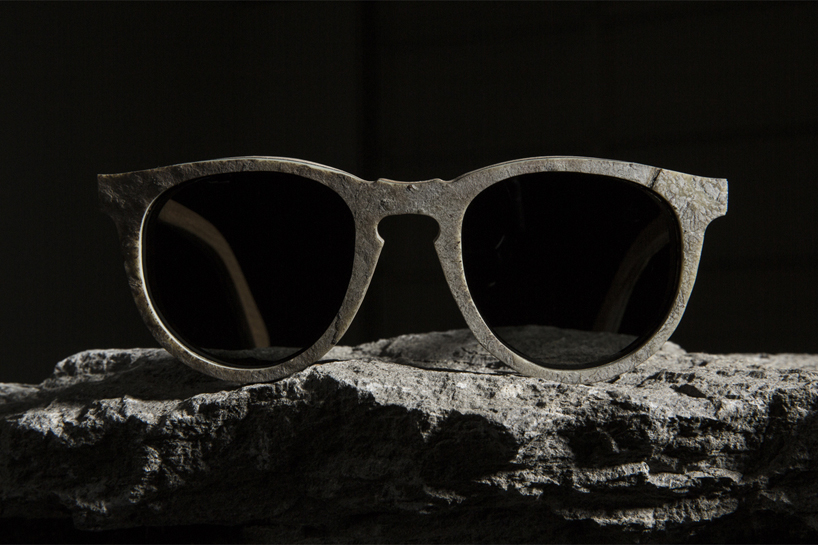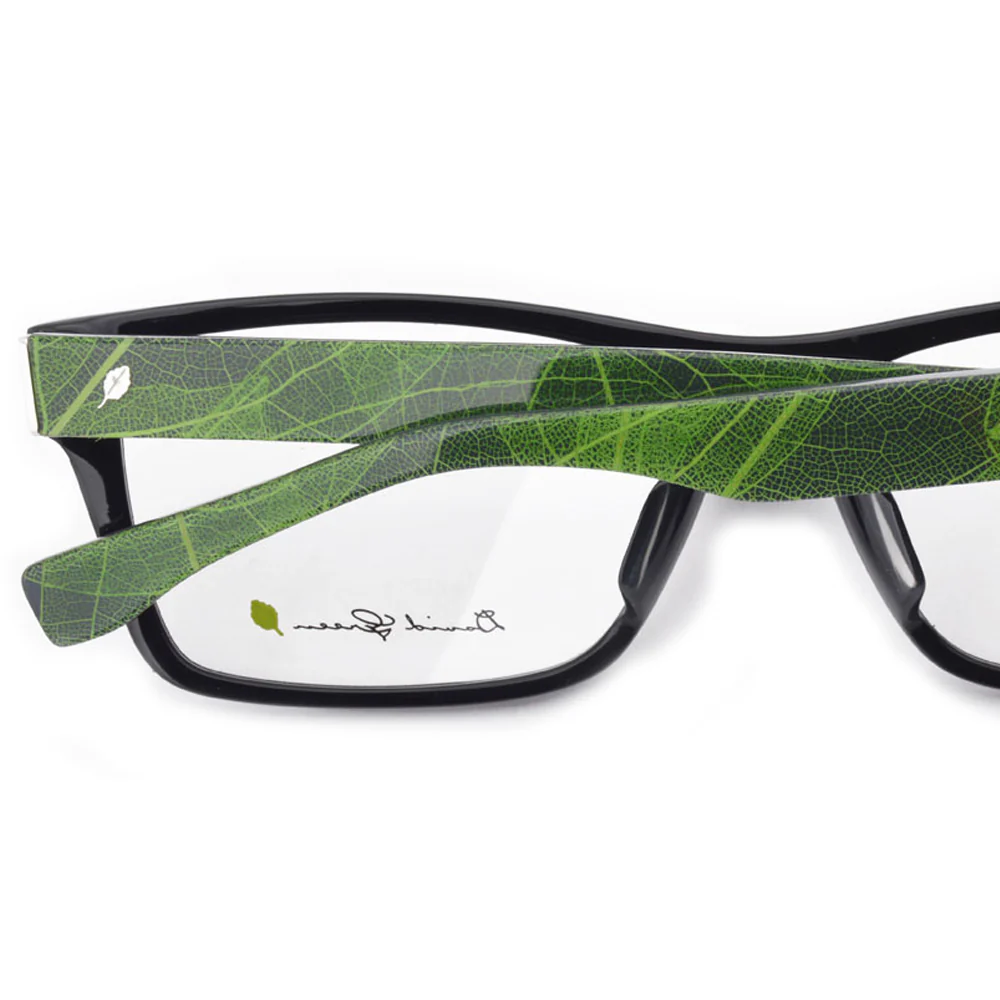Glasses are available in many different materials, each with unique benefits and features. The choice of material can affect the weight, durability, comfort, and style of the glasses. These materials can be generally put into three categories, plastics, metals and natural materials.
What Types of Plastics Are Used for Eyeglass Frames?
Plastic is a popular choice for eyeglass frames because of its lightweight nature, wide range of colors and styles.
Acetate
One of the most commonly used plastics is acetate, also known as cellulose acetate. Acetate is known for its durability and flexibility and is available in a variety of colors and textures, making it a favorite for fashion-forward frame styles. It is generally hypoallergenic, making it a good choice for those with sensitive skin.
Nylon
Nylon is another plastic material used for eyeglass frames. Nylon is highly flexible, lightweight, and impact-resistant, making it a great option for sports eyewear and wrap-around styles. Modern nylon blends often combine nylon with other plastics, like polyamide or grilamid, to improve flexibility and durability.
TR-90
TR-90 is a type of thermoplastic known for its durability and flexibility. It is lightweight, comfortable to wear, and resistant to impact, making it a preferred material for active lifestyles. TR-90 frames are also known for retaining their shape well, even under stress.
What Types of Metal Are Used for Eyeglass Frames?
Metal frames are popular for their sleek appearance, durability, and corrosion resistance. There are several types of metals commonly used for eyeglass frames, each offering different benefits.
Gold
Gold frames are a luxurious and timeless choice, offering both elegance and durability. Gold is often used as a plating or alloy in eyeglass frames rather than as solid gold due to its malleability and cost. Gold-plated frames provide a sophisticated and refined look, appealing to those who want a high-end accessory that makes a statement. These frames are also corrosion-resistant, adding to their longevity. Some gold frames mix gold with other metals to improve strength while still retaining their luxurious appeal.
Titanium
Titanium is a lightweight, strong, and hypoallergenic metal that is highly resistant to corrosion and rust. Titanium frames are often preferred by those who want durable yet lightweight glasses, making them comfortable for all-day wear. Titanium frames come in a variety of colors and finishes, providing a modern and sleek look.
Stainless Steel
Stainless steel is another durable and corrosion-resistant metal used in eyeglass frames. Stainless steel is lightweight, strong, and hypoallergenic, which makes it suitable for those with sensitive skin. It is also flexible enough to allow for adjustments, ensuring a comfortable and secure fit.
Monel
Monel is a metal alloy that is commonly used in eyeglass frames due to its malleability and resistance to corrosion. It is durable and can be adjusted easily for a comfortable fit. Monel frames are usually coated to prevent any allergic reactions, as some people may be sensitive to the nickel content in the alloy.
Aluminum
Aluminum is a lightweight metal that offers a modern and stylish look. While it is not as flexible as other metals, aluminum is corrosion-resistant and durable, making it a long-lasting choice for eyeglass frames. Aluminum frames often have an anodized finish, which enhances their appearance and protects against wear and tear.
Beryllium
Beryllium is a lightweight and flexible metal that is highly resistant to corrosion, making it a good choice for those who spend time around saltwater or live in humid environments. Beryllium frames are strong and flexible, allowing for adjustments and a comfortable fit.
Are There Combination Frames?
Combination frames are made from a mix of materials, often combining metal and plastic or wood to create a stylish and functional design. These frames offer the benefits of both materials, such as the durability of metal and the vibrant style options of plastic or the unique texture of wood. Combination frames can also provide more flexibility in design, allowing for unique shapes, colors, and styles that are both fashionable and functional.
What Are Memory Metal Frames?
Memory metal frames, often made from materials like flexon or titanium alloys, are known for their unique ability to bend and return to their original shape. These frames are often referred to as “memory metal” or “flex frames” due to their flexibility and durability. They are an excellent choice for those who need frames that can withstand rough handling or active lifestyles. Memory metal frames are typically lightweight and comfortable to wear, offering a secure fit while reducing the risk of frame breakage. They are particularly popular for children’s glasses and sports eyewear.
What Are The Different Types of Natural Material Frames?
Wood
For those who prefer environmentally-friendly or unique eyewear, there are frames made from wood. These frames are becoming increasingly popular due to their distinct appearance and eco-friendly appeal. These frames are typically handcrafted, offering a one-of-a-kind style. Wood frames are generally lightweight, and some are treated to enhance their durability and resistance to moisture.
Horn
Horn frames are also available for a more luxurious and natural look. These frames are usually made from buffalo horn or other animal horns, providing a unique grain and texture. Horn frames are hypoallergenic and can be polished to achieve a glossy finish, creating an elegant style. However, they require more care and maintenance compared to other materials.
Bean
Bean frames are made from natural seeds or beans that are crafted into lightweight and durable eyewear. These materials offer a unique, organic look that blends sustainability with style. Bean-based frames are typically handcrafted, which allows for intricate detailing and an artisan touch. The use of natural seeds creates an eco-friendly option that appeals to those seeking environmentally conscious eyewear. Although these frames are lightweight, they are durable and provide an interesting texture and color that sets them apart from more traditional materials.
Stone
Stone frames are a bold and distinctive eyewear option, known for their natural patterns and textures. Crafted from thin layers of stone, often combined with other materials like metal or acetate for added strength and flexibility, these frames are both eye-catching and durable. Stone frames provide a unique aesthetic, offering the wearer a one-of-a-kind accessory that can range from earthy and rustic to sleek and polished, depending on the type of stone used. Despite what one might expect, stone frames are relatively lightweight and comfortable to wear due to the thin and skillful crafting process. They are ideal for those looking for a unique, high-quality, and artistic frame.
Bamboo Frames
Bamboo frames are a popular choice for eco-conscious individuals seeking a stylish and sustainable eyewear option. Bamboo is a natural, lightweight material that offers excellent durability and flexibility, making it comfortable to wear throughout the day. Its natural finish and grain provide a unique look, often giving frames a warm and earthy aesthetic that stands out from traditional plastic or metal options. Bamboo is also hypoallergenic and moisture-resistant, making it a great choice for those with sensitive skin or who live in humid environments.
Other Plant Materials
Frames made from plant materials offer a natural and eco-friendly alternative to traditional plastics and metals. David Green frames, for instance, are known for their use of materials like dried leaves, reeds, and other organic fibers embedded in the frames, creating stunning, nature-inspired designs. These frames are lightweight, comfortable, and highly durable while offering a unique look that incorporates natural textures and patterns. By utilizing sustainable plant materials, these frames not only make an environmentally conscious statement but also provide an artistic flair that sets them apart from conventional eyewear. Each pair of plant-based frames is often uniquely patterned, ensuring that no two pairs are exactly alike.
Every eyeglass material has its own unique qualities, offering fashionable, collectible, and stylish options to suit different tastes. From the bold colors and lightweight feel of acetate to the sleek and modern appeal of metals or the natural beauty of wood and buffalo horn, each material provides an opportunity to express personal style. Understanding these differences allows you to find frames that not only suit your lifestyle but also make a statement as a unique and stylish accessory.
Discover independent eyewear with Project Spex. Every Friday, we deliver the latest in collectible eyewear and your favorite independent designers.
Sign up now and never miss a thing!
About The Author:

Will Benjamin is an advocate for independent eyewear and one of the driving forces behind Project Spex. With a passion for unique, collectible, and limited-edition eyewear, Will aims to inspire people to build their own collections through Project Spex, while supporting the success of independent opticals.

